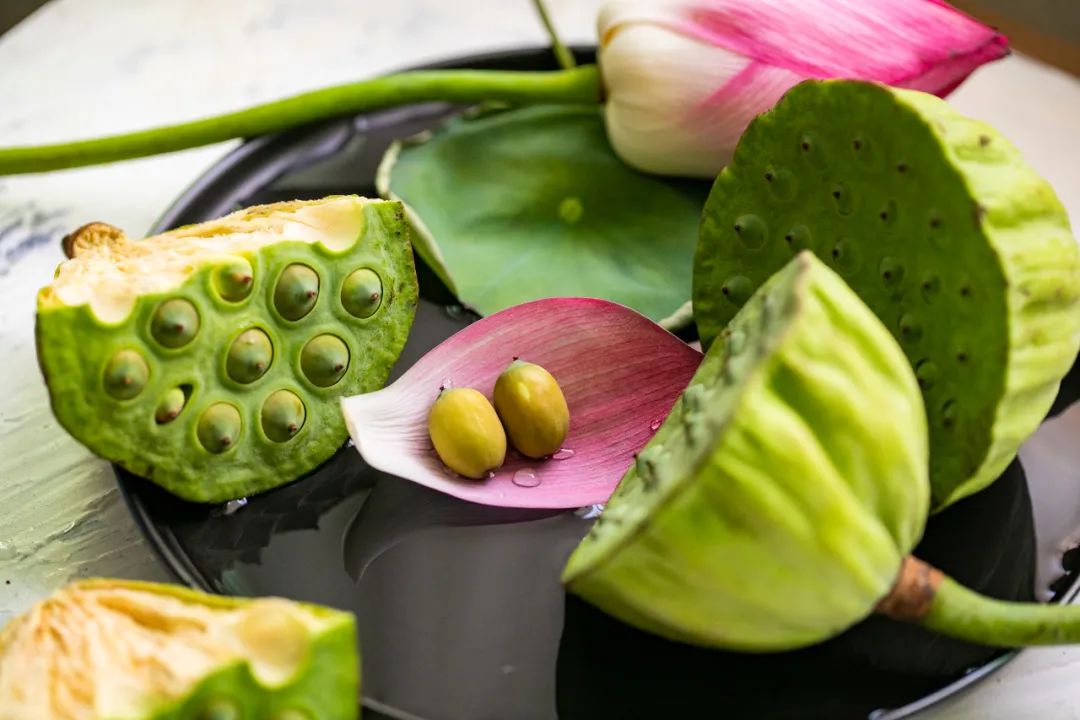This section’s audio
Click here to listen to the audio lesson↑
You can click the “Read the original text” at the bottom of the page to listen to more audio in this series on Ximalaya~
Text version
This text review corresponds to the original audio content (including original medical cases and specific prescriptions) click here to view → Caution for Children Eating Fruits: Beware of Spleen and Stomach Deficiency and Cold | Discussing Zhang Xichun’s Medical Cases
Good morning, dear friends! Today we continue to discuss the stories of Zhang Xichun’s medical practice. What are we discussing next? We will talk about chronic spleen wind. In fact, through this chronic spleen wind, we can understand what problems may arise when children have weak spleen and stomach. Today’s patient is the director of the Liaoning Measurement Bureau, surnamed Zhang, and his four-year-old grandson. This is a case that Zhang Xichun treated while in Shenyang, where he spent most of his life and established China’s first TCM hospital, Lida TCM Hospital, so many of his cases occurred in Shenyang. Moreover, Zhang Xichun’s recorded cases have a characteristic of naming names, while we generally avoid this today due to privacy concerns. However, in such cases, the authenticity is particularly high; can the director of the Liaoning Measurement Bureau lie? They are right there, so this is very real. This child, at four years old, became ill because he ate a lot of melons and fruits in the autumn when they were in season. The parents encouraged him to eat more fruits, “over time, it damages the spleen and stomach, and the digestive power decreases without knowing to stop“, meaning that eating too many raw and cold fruits harmed the spleen and stomach, leading to digestive issues, but he did not know the cause, so he continued to eat. As a result, “after the Mid-Autumn Festival, he developed chronic spleen wind syndrome“. What symptoms did he have? His appetite significantly decreased, he had a very poor appetite for food and drink, and his food intake was drastically reduced, and he could not digest even when forced to eat. At this time, the doctor began to prescribe digestive aids, giving him medicines to resolve food stagnation, but this only weakened the spleen and stomach further, and gradually “he experienced alternating vomiting and diarrhea“, with both vomiting and diarrhea occurring, “and intermittent convulsions“, sometimes he began to have spasms. So, Zhang Xichun was called to see the patient. During the examination, the skin was hot to the touch, indicating heat, and “his pulse was weak and thin, almost imperceptible“, indicating insufficient righteous qi. When he was drowsy, his eyes were open, unable to close his eyelids, which we previously discussed as a typical sign of spleen deficiency. Then “his spirit was weak“, showing a lack of vitality. How did this illness arise? The symptoms were the same as those discussed yesterday, completely identical. How did this happen? It was due to eating fruits and cold foods. So, should children eat fruits? Fruits are good, but they should be consumed in moderation; overeating is not advisable. Some TCM practitioners suggest that many fruits have cooling properties, such as watermelon, which is very cold. Eating too much is not good; it is fine to eat in summer when it is hot, but once autumn arrives, consuming these cold foods becomes particularly inappropriate, as it contradicts the changes in nature. Therefore, some TCM practitioners suggest that if you want to eat pears, you should boil them in water first before giving them to children.

Image source: Qian Ku NetworkSo, what is my view on fruits? First, try to avoid eating out-of-season fruits, such as strawberries in the middle of winter; these are out of season and likely treated with some methods. I think tasting out-of-season fruits is fine, but do not eat them excessively. This is the first point. Second, everything should follow the seasons. We know that foods are categorized as cold, hot, warm, or cool. In summer, it is acceptable to eat some cooling foods, but in autumn and winter, it is not suitable. Additionally, this is related to the strength of the spleen and stomach and the age of the child. When you are in your prime, you can eat some fruits, but if the child is particularly weak, I suggest eating less. This is a dialectical issue that should be viewed in the context of change. If the spleen and stomach are weak, I also agree that cutting fruits into pieces and blanching them in water is a good way to consume them. For this child, it is a typical case; being very young and eating a lot of fruits in the cool autumn led to spleen and stomach deficiency and cold. Because of the spleen and stomach deficiency and cold, it cannot warm and digest food properly, just like steaming rice requires heat to cook it. Now that the spleen and stomach are cold and deficient, they cannot digest food, leading to vomiting and diarrhea. Moreover, because of the spleen and stomach deficiency and cold, the body’s yang qi cannot transform and transport fluids, so the cold fluids stagnate, especially in the chest and stomach, leading to heart yang deficiency. We previously discussed that the heart and lung yang is expelled outward, resulting in a feeling of heat all over the body; this is called true cold with false heat, where cold evil resides internally, forcing the yang qi outward. Why did he have spasms? We previously mentioned that this is called “when the earth is deficient, the wood moves.” When the spleen and stomach are weak, the liver wind is easily activated, leading to internal movement of liver wind, which causes spasms. Zhang Xichun explained this by saying that due to insufficient qi and blood, the qi and blood cannot reach the brain, “to moisten and circulate the brain and nerves“, leading to spasms. This explanation leans towards Western medicine. However, from both perspectives, it is clear that spleen and stomach deficiency led to the child’s spasms. I will leave this point here for further discussion. Many children’s illnesses are related to this issue. How should this patient be treated? Zhang Xichun said to use warming agents, stating that the medicinal properties should be warming, “to tonify the spleen and stomach to eliminate cold fluids“, and this illness should be resolved. How was it treated? He used one tael of finely ground red stone powder (赤石脂, chì shí zhī), which we have discussed before; it has the effect of stopping diarrhea and warming the spleen, and it is heavy and can stabilize the qi mechanism, thus helping to control vomiting. When vomiting occurs, it can help to stabilize it, and it can also stop diarrhea. Red stone powder is a medicine that Zhang Xichun particularly liked to use; it is a mineral substance, specifically a type of kaolin with high water content, which is very safe. When Western medicine treats children’s diarrhea, they prescribe similar substances like Smecta, which is also a type of kaolin. Therefore, similar substances are used worldwide. Zhang Xichun used one tael to control vomiting and diarrhea; this was the first medicine, red stone powder. Next, he used six qian of fresh Chinese yam (怀山药, huái shān yào), which is used to tonify the spleen. This is Zhang Xichun’s method of supporting righteous qi. Specifically, Chinese yam tonifies the essence of the spleen; each organ has its own essence, and the spleen is nourished by Chinese yam. Then, he used six qian of cooked Rehmannia root (熟地黄, shú dì huáng) from Jiaozuo, Henan, which is a larger quantity. This is used to tonify kidney essence. Zhang Xichun has a characteristic in treating such conditions; he always uses cooked Rehmannia root to tonify the kidneys. Then, he added Bai Zhu (白术, bái zhú), which tonifies the spleen and has the effect of strengthening the spleen and eliminating dampness. He also added two qian of Aconite (附子, fù zǐ), which is warming. The previous medicines were all tonifying, but it is necessary to add some warming agents. Therefore, he added two qian of Aconite, two qian of Cinnamon (肉桂, ròu guì), which are both warming, and one and a half qian of dried ginger (干姜, gān jiāng), which is also warming. So, at this point, we see that Aconite, Cinnamon, and Dried Ginger are all warming agents. Then he added one and a half qian of Poria (茯苓, fú líng), a genuine medicinal material that strengthens the spleen and eliminates dampness. Poria is combined with the later addition of licorice and ginseng. The combination of Bai Zhu, Poria, licorice, and ginseng is known as the Four Gentlemen Decoction (四君子汤, sì jūn zǐ tāng), which is a foundational formula for tonifying qi. Therefore, we see that this is the Four Gentlemen Decoction as a base, combined with Chinese yam, cooked Rehmannia root, and warming agents Aconite, Cinnamon, and Dried Ginger, along with red stone powder, creating a formula that warms the spleen and stomach and tonifies qi. How effective was this formula? After taking one dose, vomiting stopped, and diarrhea improved significantly, with a reduction in frequency. The spasms also did not occur again. As you can see, this illness was indeed caused by deficiency and cold, and the diagnosis was accurate. Therefore, with just one dose, most symptoms were controlled; vomiting had already improved, and the feeling of heat was greatly reduced. So, what should be done next? Reduce the amount of dried ginger, change Bai Zhu to four qian, and increase the amount of Bai Zhu, then take another dose, and the diarrhea also stopped. By increasing the tonifying spleen medicine, the diarrhea improved. Then, the original amount of Aconite was halved, and goji berries (枸杞子, gǒu qǐ zǐ) were added to tonify the liver and kidneys. After taking two doses, the illness was completely cured. Zhang Xichun said that this patient did not have severe vomiting; if the vomiting had been severe, he would have used the “Fuyou Bian” formula discussed yesterday to first eliminate the cold fluids, and then take these medicines for better results. So, this is one case.

Image source: Qian Ku NetworkNext, there is another case; he discusses a child who is about to develop chronic spleen wind. This child is eight years old. How did he become ill? His family grows fruits and melons. As a result, he often eats melons when he is hungry in the autumn when they are ripe. This means he often eats melons as meals. Generally, these melons are watermelons and similar cold foods, which harm the spleen and stomach, leading to signs of chronic spleen wind. This child has symptoms similar to the previous cases, with undigested food, frequent vomiting, and many bowel movements, with undigested grains in the stool. What illness does this child have? The previous children had spasms and chronic spleen wind; this child is on the verge of developing chronic spleen wind. His symptoms include being unable to walk; sometimes he can walk, but then he cannot, and his legs become weak, unable to stand, and he can only sit on the ground. He also feels heat all over his body. As you can see, the other symptoms are similar; the previous two children had spasms, while this child has weak legs and walking difficulties. How was he treated? Zhang Xichun said that he also needed to warm and tonify the spleen and stomach. How was it treated? The formula included one tael of fresh Chinese yam, Bai Zhu, cooked Rehmannia root, and longan flesh, along with dried ginger, fresh chicken gizzard, white peony, and licorice. After taking this formula twice, he felt much better. However, he still had difficulty walking. What should be done? Adjust the formula again; it still includes one tael of fresh Chinese yam, cooked Rehmannia root, longan flesh, and some walnut kernels to tonify the kidneys, Bai Zhu, and Sichuan Dipsacus to strengthen the muscles and bones, along with dried ginger, fresh chicken gizzard, and white peony. After taking this formula twice, the illness was cured. After recovery, Zhang Xichun advised him to avoid eating raw and cold fruits to prevent recurrence. I have elaborated on one case and briefly mentioned another. In summary, the issues faced by these children stem from spleen and stomach deficiency, which has been harmed for various reasons. The child discussed yesterday may have harmed the spleen and stomach by taking cold medicines, while today’s two children both harmed their spleen and stomach by eating raw and cold fruits. One is very young, and the other, although older, eats fruits and watermelons as meals, resulting in spleen and stomach damage. We need to consider what symptoms arise after the spleen and stomach are harmed. Sometimes the symptoms can be peculiar; the chronic spleen wind leads to wind movement, causing spasms, which can manifest as various convulsions, even severe cases where the body bends backward, eyes roll back, and teeth clench. The third child has weak legs and cannot walk. We say that weakness in the legs must be addressed by focusing on the Yangming stomach channel, adjusting the spleen and stomach. Therefore, it seems that when children have weak spleen and stomach, various symptoms can arise, including spasms and other limb issues. As I share this with you, do you recall any similar symptoms? If you consider the severe spasms of chronic spleen wind, you may find it hard to locate two cases of chronic spleen wind in modern society. However, you will discover that many children today have issues with spasms, right? Many children exhibit eye twitching, which is also a form of wind movement, known in TCM as internal liver wind. Some children may have involuntary abdominal spasms. There are various forms of spasms, with the body twitching involuntarily. I can tell you that such children are very common; I would say they are not rare. In every class at school, you will find such children. Many parents who consult me about their children’s health describe similar issues. So how should we treat these spasms? In the past, we often thought they were due to internal liver wind, so the focus was on liver regulation, nourishing the liver, and calming the liver. However, it is essential to understand that this condition is closely related to the spleen. You may wonder what the connection is between chronic spleen wind and me; in reality, we are looking at the internal structure and changes in children. Once you understand the mechanisms I have discussed over the past two days, you will realize that many issues related to spasms in children are closely linked to the spleen and stomach. Now, children today face more complex environments. First, there is intense academic pressure; in the first grade of elementary school, there are weekly exams. I have heard that some first graders do not attend classes for a month at the end of the semester; instead, they focus on doing exercises, which creates significant pressure. Some parents have high expectations for their children and enroll them in many tutoring classes, leading to much greater stress than we experienced as children. This results in liver qi stagnation and internal liver wind movement. When the liver qi is not smooth, it can also affect the spleen and stomach, leading to weakness. This is the first aspect. Secondly, the spleen and stomach themselves are prone to weakness. Why? Because many families feed their children a haphazard diet, leading to various issues from overeating. Many parents do not understand; some give their children excessive meat. In the mornings, I see parents serving their children plates of ice-cold watermelon at breakfast buffets in winter, thinking fruits are good and children enjoy them. They let them eat! This messes up the children’s spleen and stomach. Originally, the liver qi was stagnant, which affected the spleen; now, with overeating and diarrhea, the spleen and stomach are further weakened. As a result, the internal liver wind moves, and the spleen and stomach become weak. This interaction between the spleen and liver is evident.

Image source: Qian Ku NetworkTherefore, the issues faced by modern children may be even more severe than those in Zhang Xichun’s time, leading to various spasms and tremors, and manifestations of internal wind are very common. So, how do we resolve these issues? I have thought about this for many years because I have seen many such children. Initially, like everyone else, I focused on regulating the liver, but the results were not as good as I had hoped; many children did not respond. Gradually, I realized that we should focus on tonifying the spleen and stomach. By using ingredients like yam, lotus seeds, and coix seeds to nourish the spleen and stomach, I found that children gradually improved significantly. I have previously written about cases where children with spasms began to recover after gradually nourishing the spleen. Therefore, I believe that we can apply Zhang Xichun’s treatment approach for chronic spleen wind today. Why? He discusses chronic spleen wind, but in reality, the conditions children face today also involve spasms and various manifestations, all stemming from disharmony between the liver and spleen, leading to external symptoms. We should not focus solely on the external; we do not have chronic spleen wind today, so we do not need to treat it. Instead, we should understand the underlying principles. Once we understand the principles, we can harmonize the liver and spleen to treat other conditions as well. Thus, tonifying the spleen is the core. Zhang Xichun often added Bai Shao (白芍, bái sháo) to soften the liver, and I think we can also add ingredients like Sheng Mai Ya (生麦芽, shēng mài yá) to promote liver qi, and perhaps a bit of Yin Chen (茵陈, yīn chén). I often add Sheng Mu Li (生牡蛎, shēng mǔ lì) and some TCM practitioners like to use a bit of Gou Teng (钩藤, gōu téng), all of which serve this purpose. I focus on tonifying the spleen; since the spleen is weak, I strengthen it to stabilize the liver wind, allowing it to extinguish itself. Then, I add a bit of liver-soothing and softening herbs, and the results are quite good. Therefore, when studying Zhang Xichun’s medical cases, we should draw parallels. To be honest, when I was younger and studying TCM, I might not have felt much when reading these cases. I might have thought that chronic spleen wind was something I would not encounter in a year, so I would just glance at it. However, with experience, after seeing so many children, I realized that there is a thought process behind it. Once you understand this thought process, you will see that the human body is interconnected, and you will know how to adjust it. This is a valuable insight. One thing to keep in mind is that today’s children are more complex than in the past. They eat much better than before, so some children may have yang deficiency, while others may have insufficient spleen yin, leading to distinctions between yin deficiency and yang deficiency. The cases Zhang Xichun wrote about mostly involve yang deficiency and spleen yang deficiency. We must recognize that there are also cases of yin deficiency today, so when adjusting treatments, we must consider that many children eat excessive meat, leading to the need for digestive aids to nourish spleen yin, among other considerations. Alright, dear friends, that concludes today’s story about Zhang Xichun’s medical practice. Thank you all for listening, and see you tomorrow!
Last episode review
What is “chronic spleen wind”? It is a disease that children are prone to when exposed to cold | Review of Zhang Xichun’s Medical Cases (← Click to read)
Audio and text by Luo Dalun | Edited by Ziye
Dr. Luo’s official WeChat account has the following four, please long press the QR code to identify and follow! All others are imitations, please do not be deceived!
Luo Dalun Channel
WeChat ID:
luodalunpd

Dalun Academy
WeChat ID:
Dalun_sy

Dalun Parenting Talk
WeChat ID:
dalun_yes

Dr. Luo Dalun
WeChat ID:
Drluodalun

1. The copyright of original articles in this public account belongs to this account. If you need to reprint, please leave a message to the editor and indicate the source. Commercial use is prohibited.
2. The articles reprinted in this public account are for learning and communication purposes only and fall within the scope of fair use. If there are errors in the attribution of image sources, data sources, or text copyright sources, please inform the editor, and they will correct or delete it immediately.
3. This public account owns the portrait rights of Dr. Luo Dalun. Any unauthorized use will be pursued legally.
4. This public account is legally supported by Beijing Zhongzhe (Shenyang) Law Firm. This account will pursue legal responsibility for any unauthorized reprints, commercial use, and refusal to delete posts after warnings.
The cover image is authorized for use by Qian Ku Network; please do not plagiarize for commercial use.
The copyright of this column belongs to “Dalun Academy”; sharing and reprinting are welcome~

Scan to follow us

Dalun Academy
WeChat ID : Dalun_sy
Traditional Chinese Medicine | National Studies | Heart Nourishment
Scan to follow us

Click to read the original text to listen on Ximalaya

